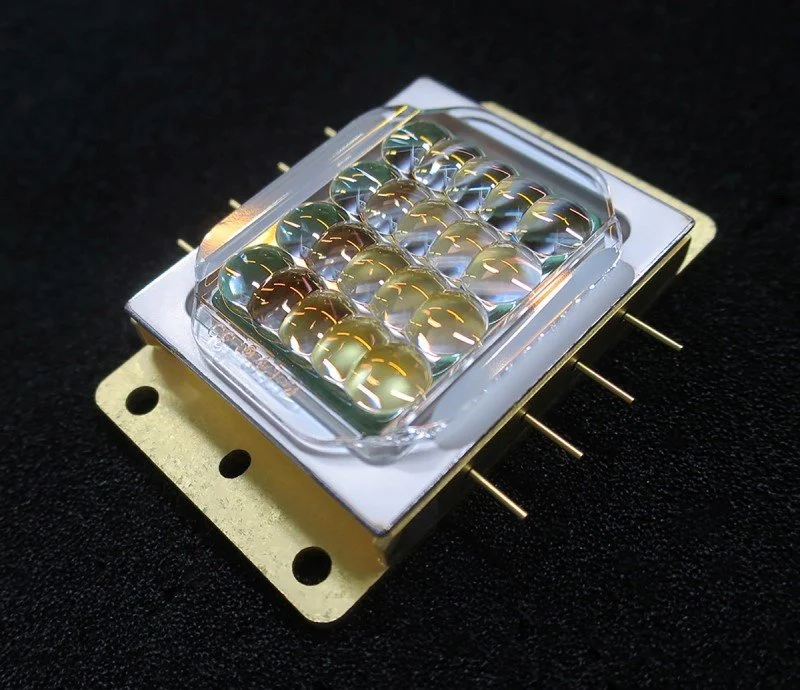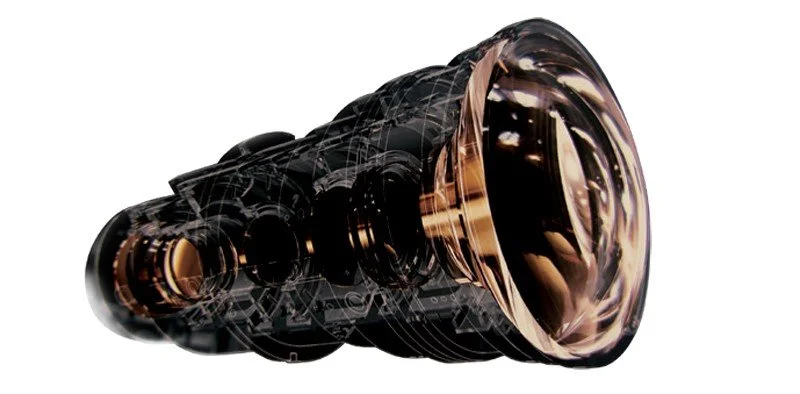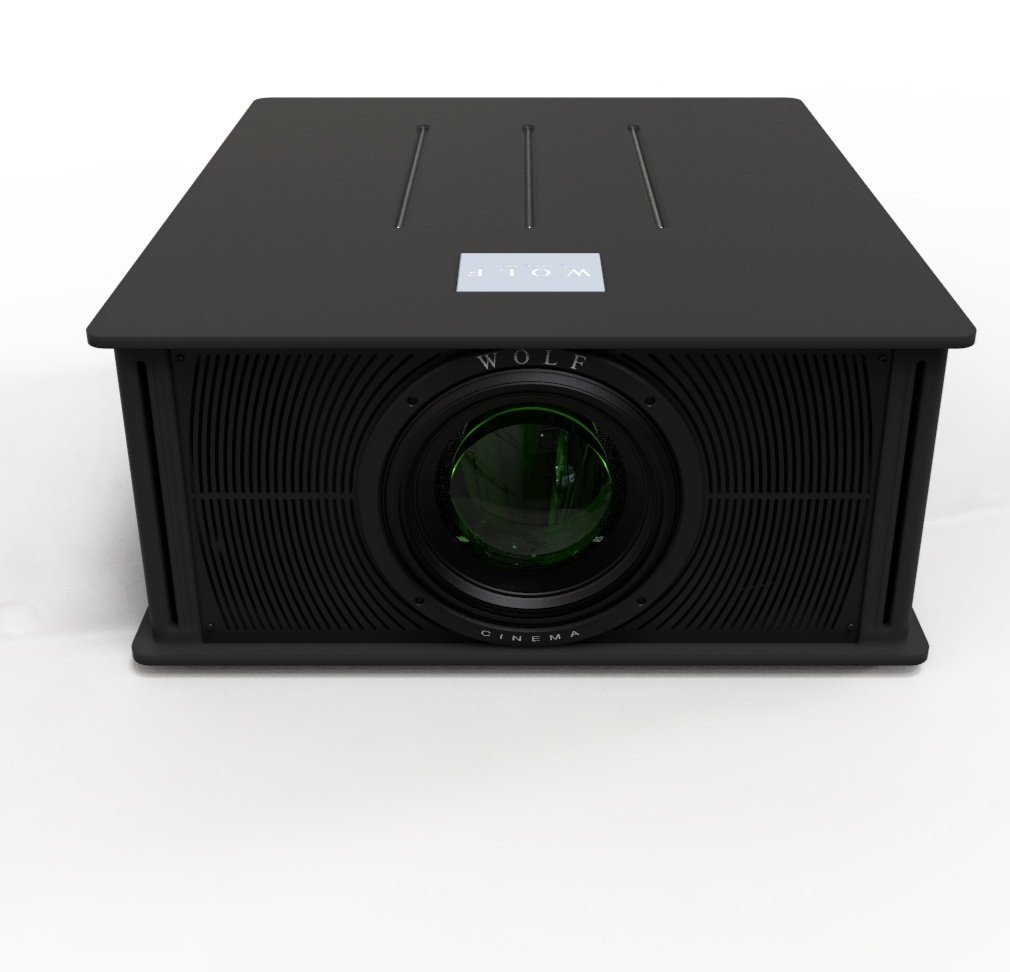The Latest In D-ILA Imaging Technologies
The recent pace of advancement in home theater projection technology has experienced both evolutionary and revolutionary advancements. Year after year, we’ve seen brightness levels creep up and contrast performances improve, using higher resolution displays that present vastly superior images. From time to time, new technologies come along that can enhance our viewing experience even further, such as the introduction of high dynamic range (HDR) and wider color gamut layered into our movies and TV shows – improvements that are best viewed on a large home cinema projection system. Today, we’ve crafted some of these most revolutionary advances into one new product series in Wolf Cinema’s TXF line – the latest three-chip D-ILA laser illuminated engines.
As an OEM partner with JVC Kenwood, we’re helping deliver the latest lineup of LCoS-based D-ILA (Digital Direct Drive Image Light Amplifier) imaging solutions, which immediately positions us in the upper-echelon of projector brands. LCoS imaging panels were developed to meet the many challenges in superior large screen imaging and they are more expensive to produce—which is why so few manufacturers offer them.
D-ILA panels offer certain advantages over competing imaging devices. First, the use of an opaque reflective layer behind the liquid crystal cells used to create the image means that all the electronics and connections needed to address the pixels can be hidden behind the layer. This results in a super-tight pixel array with a very high fill-factor that makes the spaces between pixels vanishingly small. These D-ILA chips also use vertically aligned liquid crystals, which are already black in their natural state before being twisted by the signal current to open up and pass light. That translates to superior native blacks and higher contrast levels, well beyond many other projection display implementations.
D-ILA imaging technologies utilize an opaque reflective mirror layer at the back that hides the electronics and allows for a super-tight pixel array and high fill factor. Vertically aligned liquid crystals provide high contrast.
Wolf Cinema’s latest projectors use the same native 4K (4096 x 2160) 0.69-inch D-ILA imaging chips introduced in 2017, but they take flight from there with a host of new features. Three new laser projectors in the TXF Series are perfect for our clients and supported by the professional AV integrator, many of which are members of the CEDIA (Custom Electronics Design and Installation Association). Our new Wolf Cinema laser 8K editions include the models TXF-1900, TXF-2800 and TXF-4200. Let's take a closer look.
Lasers Replace Lamps
Laser light engines have now largely replaced lamps among business and commercial entertainment projectors, for good reason. Lasers last longer than lamps and provide more consistent brightness and color over their lifetime, while eliminating the cost of ongoing lamp replacements. They also offer rapid turn-on compared with lamps and shut down instantly with little or no need for fan cooling after the fact.
One of the BLU-Escent laser diode modules
Nonetheless, laser technology has had a somewhat slower adoption rate among home theater projectors where image quality is most critical. Wolf Cinema’s continued refinement of laser offerings is significant, particularly given its attractive pricing compared with competitors. The new TXF-series models take advantage of a newly re-engineered BLU-Escent laser diode module, where blue laser light is combined with a unique phosphor wheel to create the red, green, and blue primary colors for the three D-ILA imaging chips. Compared with the first-generation BLU-Escent modules, the new module provides significantly brighter light from a smaller package, plus it runs cooler to allow for exceptionally low fan noise from a laser projector. The laser module is rated for 20,000 hours life—equivalent to more than nine years (!) of watching the projector for six hours a day.
In our top two models, the TXF-2800 and TXF-4200, the light coming from the BLU-Escent module ends up passing through an advanced high-contrast optical block developed specifically for this new projector line. Here, a fresh approach was applied to the required prism polarization, which allows the projector to more effectively use the green light component. Green is a major contributor to perceived brightness, so this contributes about a 10% increase in optical efficiency that helps the projectors reach as high as 3,300 ANSI lumens in the TXF-4200. A new optical device in the light path also helps to eliminate stray light in the optical block to further create ultra-deep blacks. When coupled with dynamic control of the laser, all the new D-ILA projectors are able to claim infinity:1 dynamic contrast during black transitions inter-scene.
The TXF-4200 uses a sophisticated all-glass, 100mm lens with 18 elements in 16 groups .
Furthermore, we have retained the superb all-glass lenses introduced for previous models – a 100mm 16-group/18-element lens used in the TXF-4200 and TXF-5000 editions, plus a 65mm 15-group/17-element lens for the other two platforms. What all of this translates to is the ability to accommodate bigger screens with significantly improved HDR highlights, more precise control of light and contrast levels (verses what a mechanical aperture can provide), and detailed images out to the image edges, even with 8K signals.
TXF-4200 laser projector
Advanced HDMI Imaging
All three of our latest projectors feature a pair of today's most advanced 48 gigabit-per-second HDMI 2.2 ports (with HDCP 2.3 copyright management). That makes them the some of the only consumer projectors currently on the market that can take full advantage of 4K/120 Hz frame-rate video games from a computer or the latest gaming consoles. This high-resolution/high frame rate capability is combined with Low Latency modes to reduce input lag and make for a satisfying, big screen gaming experience.
Thanks to 48 gigabit-per-second HDMI inputs, the new TXF-series of D-ILA laser projectors are able to display games at 4K/120 Hz from a computer, or the new PS5 and Xbox Series X gaming consoles.
World's First 8K Input Projectors
Just as critically, the wide bandwidth HDMI ports are also fully compatible with 8K input sources up to 60 Hz frame rate, so these projectors provide an enhanced experience today while remaining forward-looking towards tomorrow. While all three of our newest editions offer the ability to receive and cast an 8K signal, the two step-up editions offer a more advanced version of its pixel-shifting technology – advances that can accept and render the full advantage of all information in an 8K video signal.
By way of background, the D-ILA engineering teams created a number of unique pixel shifting light engines years ago, as way of doubling the number of on-screen pixels from the 1080p chips. These early D-ILA imagers delivered on the promise of emerging UHD/4K sources. The combination of a second set of pixels (shifted one-half pixel down and one-half pixel over), along with advanced signal processing, effectively delivered visual 4K detail on screen.
What's unique with these technologies, is the rate at which the content is upconverted on screen 8K images. The previous engines operated at 120Hz refresh rates, which allowed a two-phase pixel shift and a doubling of the pixel count. That methodology is still used in the TXF-1900, called 8K Duo, which utilizes the native 4K imagers to present either 4K or 8K content by addressing approximately 17.7 million pixels. A remarkable imager indeed!
The first-generation e-shift technology, which is deployed for 8K imaging in Wolf Cinema’s TXF-1900, Duo 8K tech doubles the number of on-screen pixels with a two-phase pixel shift running at 120 Hz. The Quattro 8K (8K X, bottom right) runs at 240 Hz and uses four-phase pixel shifting to display stunning, pixel-for-pixel 8K images with the TXF-2800 and TXF-4200.
But even more refined imaging – available in the TXF-2800 and TXF-4200 home cinema projectors – boasts the ability to accept and present native 8K content via a massive increase in processing power. Thanks to updated LSI processing chips, 240 Hz drivers enable four-phase pixel shifting/rendering. So, in the 8K Quattro technologies, all 35 million-plus pixels in a single frame of DCI 8K video are cast on-screen, with no lost pixels or truncated information. Simply stated, these engines deliver pixel-perfect rendering of 8K content. And the results go way beyond the ability to produce more detail. All those extra pixels in an 8K signal can also provide finer gradations of color and brightness. With true 8K content, it amounts to an eye-popping and more cohesive, film-like viewing experience. along with JVC's Cinema Filter that can be engaged to provide full DCI-P3 gamut coverage in the top two models.
Dynamic HDR, Take Two
Wolf Cinema’s prior line-up of 4K lamp-based projectors were highly acclaimed for their excellent rendering of HDR content. The HDR technologies used dynamic Frame Adaptive tone mapping algorithms that analyze the HDR-encoded content in real-time – on a scene-by-scene or frame-by-frame basis – to deliver the very best HDR experience around.
A new upgrade now offered in all three new laser-illuminated D-ILA projectors, is full compatibility with HDR10+. HDR10+ programs contain scene-by-scene dynamic tone-mapping instructions embedded in the content stream. So, end users will now have the option to enjoy either our own Frame Adaptive image processing, or the dynamically tone-mapped picture via HDR10+ that was envisioned and encoded by the program creators.
Integrated VariScope™ Lens and Image Calibration Memories
Like all previous editions, our newest laser projectors offer multiple VariScope™ lens memory positions that can be set to present specific aspect ratios – i.e., 4X3 content, 18/9 (1.78:1), 1.85:1, 2.20:1, 2.35:1, 2.40:1 and more via precision electronic lens zoom, shift, and focus memories. We have retained those important features that enable our clients or custom installers to associate specific picture modes and settings to different SDR and HDR signal types. We also offer advanced pixel adjustment capabilities, plus convenient installation features such as screen edge masking, anamorphic scaling with third-party anamorphic lenses, and a host of other advanced image tuning capabilities. There is truly nothing lacking in our latest D-ILA imaging platforms.
Status Quo for Integrators
Given all this innovation packed into these projectors, it's also important to point out what hasn't changed. Installers and consumers who have worked with Wolf Cinema in past will find our new editions familiar and easy to work with. The internal menu system is essentially the same, with minor modifications to accommodate new features such as the laser Dynamic Control function that replaces the earlier dynamic aperture settings. Similarly, remote codes have been carried over, so few modifications will be required when working with third party control systems. All prior control connections are found in the new models, including LAN, RS232C, and 12v Trigger, and notably these new projectors are Control4 SDDP compliant.
As you can see, there's a lot to talk about in Wolf Cinema’s latest-generation of D-ILA home theater projectors, and most importantly beyond the features – that image fidelity we are known for worldwide is all there. Sit back, relax, power up and get ready to be amazed. Our latest editions break new ground technologically and further cement our position as a premiere brand for those seeking the ultimate home theater solutions.




